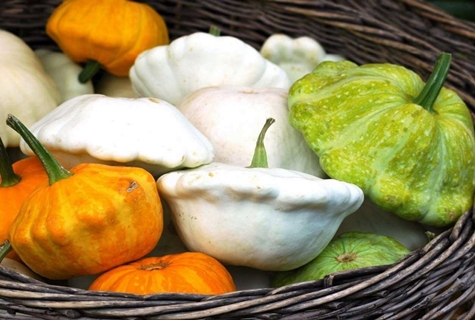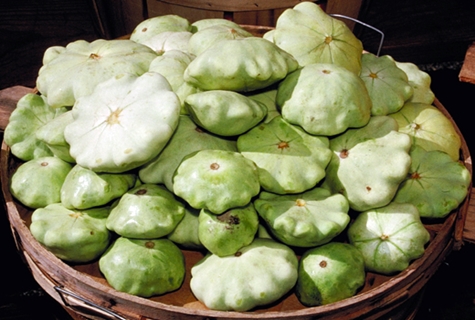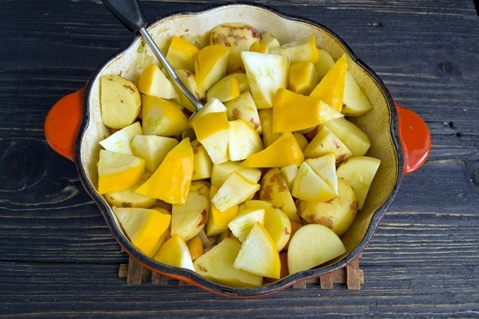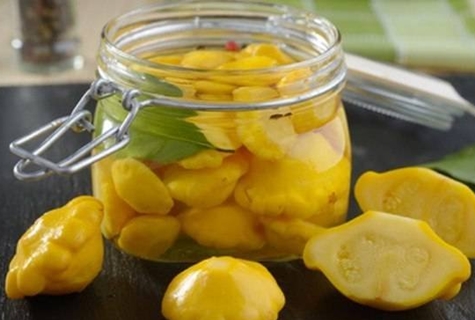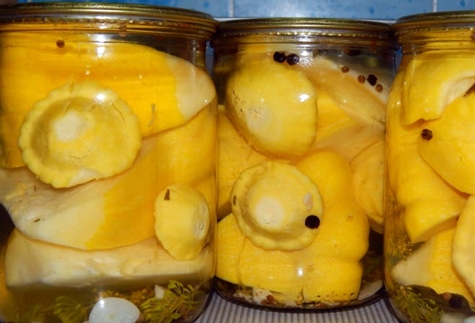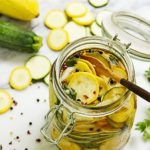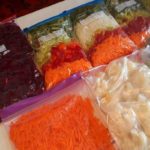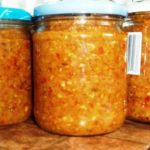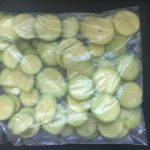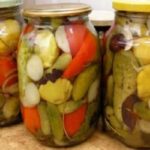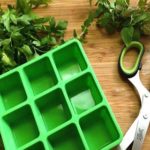Freezing summer vegetables is necessary in order to enjoy the natural taste and benefit from the product in winter. Patisson is a relative of pumpkin, squash. It contains many vitamins and minerals that strengthen the immune system, cleanse the body of toxins, remove salts and reduce cholesterol in the blood. To preserve nutritional components, vegetables need to be frozen correctly.
Harvesting for storage
The whimsical and original shape of the squash resembles a plate with carved edges. The name is translated from French as a vegetable plate.The pulp contains vitamin A, PP, vitamins B, C, calcium, phosphorus, iron.
During the ripening season, you need to harvest three times a week. If harvesting is rare, the vegetables will become overripe. The skin turns white, and the flesh becomes loose and loses valuable substances. You need to cut it with the stalk.
Unlike their relatives, pumpkins, squash are not stored fresh for a long time. At room temperature, fresh vegetables can be stored for no more than two days; in the refrigerator you can keep them fresh for a week.
Despite the fact that vegetables can be bought in the store all year round, it is summer fruits that contain the vitamin and mineral complexes necessary for the body. There are other positive aspects of freezing squash:
- winter vegetables are more expensive, so you can save your budget by taking a portion of squash out of the freezer;
- you can be absolutely sure that the vegetables have not been treated with chemicals and were stored under the correct conditions;
- clean, chopped and peeled pieces can be immediately added to the prepared dish, so the housewife also saves time;
- there is no need for storage in the basement and cellar, especially if there is none.
All you need to do is prepare the food and equipment. During the work, you just need to wash the vegetables, cut them into slices and place them in containers.
Preparatory stage
Squash can be kept fresh for no more than a week. But when frozen or canned, the vegetable can be used as food for a long time. You need to choose squash for freezing that does not have scratches, dents or other damage.
The product must be thoroughly washed to remove dirt; you can use a sponge. Small vegetables can be frozen whole. After washing in cool water, they need to be dried well and placed in bags.
The shelf life of frozen squash pieces is approximately 10 months.
Large fruits are recommended to be cut into slices. The peel should be cleaned first. The cut cubes are placed on a flat dish and placed in the freezer for two hours. After this, the cubes are collected in one bag and sent back to the freezer. This procedure will prevent the slices from freezing to each other.
To freeze squash for the winter, you can use vacuum bags and plastic containers. They will protect the contents from foreign odors and preserve useful components. It is useful to indicate the date and time of packaging on each container.
Some recipes for freezing squash contain an additional step. Experienced housewives carry out a blanching procedure before freezing squash. Two large pots of water will come in handy. Place one container on the fire and bring the water to a boil. Pour cold water into another and drop ice cubes. Whole squash is immersed in boiling water for 6 minutes, while pieces need only be dipped for 2 minutes. Then immediately place the vegetables in ice water.
Taking contrast will help maintain the shape and elasticity of the pulp. It will not disintegrate after defrosting and during cooking. After this stage, the vegetables are laid out on paper or a towel and left to cool completely.
Rules and methods of storage
You only need to store vegetables at home in the freezer. The lower the temperature, the longer you can keep them there. The optimal temperature is considered to be -18 degrees. At temperatures above -10 degrees, storage is allowed for only three months.
You should not choose glass containers for storage, as they can crack due to sudden temperature changes.Vacuum bags that are closed with special clamps are best suited. It is convenient to use plastic containers.
There are several options for how to freeze squash for the winter. You can cut vegetables in different ways. The shape depends on the purpose for which they are intended to be used after defrosting. You can place the chopped pieces in one large bag, or you can put them in small ones for portion use.
You can puree frozen vegetables:
- The squash is peeled and gutted, cut into small cubes;
- sliced vegetables are placed in a pan with water and cooked over low heat until tender;
- cooked vegetables are turned into a paste using a blender;
- the resulting homogeneous mass is laid out in small, portioned containers;
- squash puree is placed in the freezer for three hours;
- The frozen cubes are removed from the molds and poured into a bag.
As needed, the cubes are heated or added to another ready-made, hot dish, such as porridge or mashed potatoes. They defrost quickly and give the dish a delicate, pleasant flavor.
Many housewives freeze squash with other vegetables: “If you plan to freeze squash for a vegetable stew, then I prepare it at the same time as other vegetables. I wash and remove seeds from bell peppers, eggplants and tomatoes. I cut all the vegetables into cubes and place them in one bag. “I have frozen vegetables this way for several years in a row. It’s very convenient to use ready-cut vegetables in preparing various dishes.”
Other winter storage methods
You can dry the squash for the winter. They will also retain all the nutritional components. You can dry it in direct sunlight or in the oven.It is necessary to select only ripe, undamaged fruits. They are washed, the edges and stem are cut off. Then you need to cut the vegetable into rings.
Place the sliced rings in one layer on a baking sheet or sheet of paper. It is imperative to turn the cuttings over after a certain time. In the oven, the whole process will take about 6 hours. It is recommended to store the finished dried slices in a fabric bag.
Squash is often canned. There are many popular and proven recipes. Vegetables can be salted, pickled, made into salads and jams.
Recipe for pickled squash.
- Squash in an amount of 500 g is washed from contamination. Large fruits are cut into cubes, and small ones are left whole.
- You will need bell and hot peppers. Vegetables are washed, seeds, stems and partitions are removed. It is better to cut into strips.
- In sterilized jars, put 6 allspice peas, one bay leaf, 3 cloves of garlic (can be cut into slices and the taste will be sharper), cherry and currant leaves as the first layer.
- Peppers are placed on the spices.
- The last layer is placed in glass containers with squash and boiling water is poured into the jars for 6 minutes.
- The water is drained and 50 g of salt and sugar are added, as soon as the water boils again, pour in 5 ml of vinegar.
The jars are rolled up and wrapped in a warm blanket until the contents have completely cooled.

